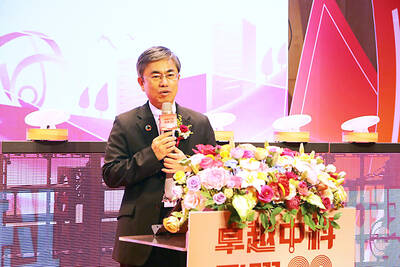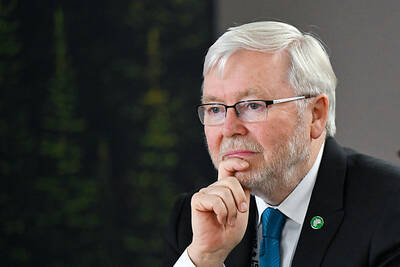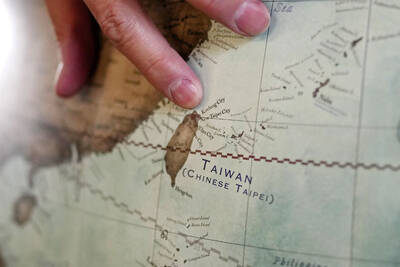Japan's electronic appliance makers have been competing with new products that are both economical and environmentally friendly in the mature washing-machine market.
Japanese electronic manufacturers usually sell a total of about 3.8 million washing machines in Japan each year. Japanese appliance makers, which have already satisfied consumers with powerful cleaning capability, have been putting forth efforts to develop products that are different from competitors, the analysts said.
They said Japanese appliance makers focus more on the domestic washing machine market as they do not make good profits in overseas markets.
Unlike other manufacturers such as Japanese auto makers, which have a strong presence in other Asian markets, Chinese and South Korean makers are more competitive in those markets thanks to the improvements in technology and the cheaper prices of washing machines.
"In order to attract Japanese consumers who only buy new washing machine every eight years or so, each Japanese appliance makers tries to invent new products that are different from others," said a spokesman at Sanyo Electric Co.
According to the Japanese government, the average years of using washing machines among Japanese consumers is 8.5 years. It also said the ownership rate of washing machines in Japan stood at 99.3 percent last year.
Sanyo released its new soapless washing machine on Aug. 1. Since its launch, the company has sold about 30,000 units despite the high price of ?128,000 yen (US$1,06).
"Despite the dampening of consumer sentiment amid the recession, our sales for the new product is 30 percent more than our past new washing machine product sales," said the Sanyo official.
Instead of soap, Sanyo's new washing machine cleans the dirt by stream of bubbles created by ultrasonic waves. It is then broken down by electrolysed water produced by two electrodes.
Sanyo's new machine uses activated oxygen and hypochlorous acid, generated by electrodes on the side of the wash basin to dissolve dirt particles.
This prevents the dirt from reattaching to clothes, while simultaneously sterilizing the laundry, Sanyo said.
The company said its new products saves ?32 per wash load for detergent costs alone. Over a years time this represents a potential savings of about ?12,000 (US$100).
Sanyo says the machine should help people with skin problems triggered by laundry detergents, such as babies, who are often allergic to soap.
The Sanyo official said Japanese consumers, who are obsessed with cleaning, wash towels and underwear which they use at night every morning.
"Those are not very dirty but many Japanese consumers wash them anyway. The product was developed because many Japanese who prefer to avoid using detergent when washing such items as towels and dyed fabrics," the Sanyo official said.
The company spent five years developing of the new product. Sanyo, which places fourth in the fully automatic washing machine market with a share of some 10 percent, was keen for new models with features not offered by its rivals.
Sharp Corp. also said it will launch what it claims to be the world's first washing machine on November 1 that uses "supersonic vacuum bubbles" to remove tough stains without laundry detergent.
Sharp said the bubble jets are 100 times more powerful than the cleaning capacity of its previous model, making it possible to save about 30 percent of laundry detergents. It will be priced at ?125,000.
Matsushita Electric Industrial Co released this summer new top-loading washing machine that has a built-in dryer. The new washer-dryer has a suggested retail prices of ?165,000. Hitachi Ltd also launched in September a top-loading washing machine with a built-in dryer.
Many Japanese households do not have a dryer because of a space shortage. Matsushita said the new machines target single women living on their own who may feel uncomfortable hanging their laundry outside, as well as elderly couples who may find it burdensome to lug their laundry around.
Japanese appliance makers cannot ignore such people because of the rising numbers of unmarried Japanese women, and the increasing population of elderly in Japan.

NEXT GENERATION: The four plants in the Central Taiwan Science Park, designated Fab 25, would consist of four 1.4-nanometer wafer manufacturing plants, TSMC said Taiwan Semiconductor Manufacturing Co (TSMC, 台積電) plans to begin construction of four new plants later this year, with the aim to officially launch production of 2-nanometer semiconductor wafers by late 2028, Central Taiwan Science Park Bureau director-general Hsu Maw-shin (許茂新) said. Hsu made the announcement at an event on Friday evening celebrating the Central Taiwan Science Park’s 22nd anniversary. The second phase of the park’s expansion would commence with the initial construction of water detention ponds and other structures aimed at soil and water conservation, Hsu said. TSMC has officially leased the land, with the Central Taiwan Science Park having handed over the

AUKUS: The Australian Ambassador to the US said his country is working with the Pentagon and he is confident that submarine issues will be resolved Australian Ambassador to the US Kevin Rudd on Friday said that if Taiwan were to fall to China’s occupation, it would unleash China’s military capacities and capabilities more broadly. He also said his country is working with the Pentagon on the US Department of Defense’s review of the AUKUS submarine project and is confident that all issues raised will be resolved. Rudd, who served as Australian prime minister from 2007 to 2010 and for three months in 2013, made the remarks at the Aspen Security Forum in Colorado and stressed the longstanding US-Australia alliance and his close relationship with the US Undersecretary

‘WORLD WAR III’: Republican Representative Marjorie Taylor Greene said the aid would inflame tensions, but her amendment was rejected 421 votes against six The US House of Representatives on Friday passed the Department of Defense Appropriations Act for fiscal 2026, which includes US$500 million for Taiwan. The bill, which totals US$831.5 billion in discretionary spending, passed in a 221-209 vote. According to the bill, the funds for Taiwan would be administered by the US Defense Security Cooperation Agency and would remain available through Sept. 30, 2027, for the Taiwan Security Cooperation Initiative. The legislation authorizes the US Secretary of Defense, with the agreement of the US Secretary of State, to use the funds to assist Taiwan in procuring defense articles and services, and military training. Republican Representative

TAIWAN IS TAIWAN: US Representative Tom Tiffany said the amendment was not controversial, as ‘Taiwan is not — nor has it ever been — part of Communist China’ The US House of Representatives on Friday passed an amendment banning the US Department of Defense from creating, buying or displaying any map that shows Taiwan as part of the People’s Republic of China (PRC). The “Honest Maps” amendment was approved in a voice vote on Friday as part of the Department of Defense Appropriations Act for the 2026 fiscal year. The amendment prohibits using any funds from the act to create, buy or display maps that show Taiwan, Kinmen, Matsu, Penghu, Wuciou (烏坵), Green Island (綠島) or Orchid Island (Lanyu, 蘭嶼) as part of the PRC. The act includes US$831.5 billion in